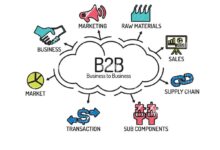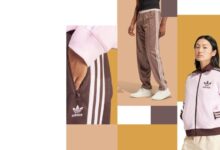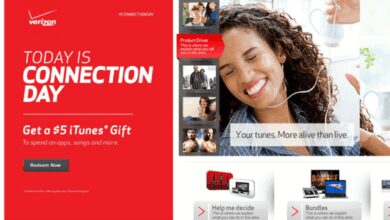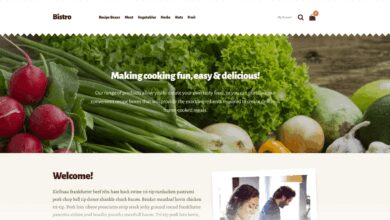b2b adidas: 7 Powerful Strategies That Dominate the Market
When it comes to B2B operations in the sportswear industry, b2b adidas stands out as a global powerhouse. With decades of innovation and strategic partnerships, the brand has redefined how businesses collaborate at scale.
Understanding b2b adidas: The Foundation of Global Sportswear Commerce

The term b2b adidas refers to the business-to-business arm of the iconic German sportswear giant, Adidas AG. Unlike its consumer-facing retail operations, the B2B segment focuses on supplying products, licensing intellectual property, and forming strategic alliances with other businesses—from large retailers to sports federations and tech partners.
What Defines b2b adidas?
At its core, b2b adidas encompasses all commercial activities where Adidas acts as a supplier or collaborator rather than a direct-to-consumer brand. This includes wholesale distribution, co-branded product development, licensing agreements, and digital integration services for retail partners.
- Wholesale distribution to major retailers like Foot Locker and JD Sports
- Licensing deals with third-party manufacturers for accessories and apparel
- Technology partnerships for supply chain optimization
These operations are critical for scaling Adidas’s global footprint without overextending its direct retail infrastructure.
Evolution of b2b adidas Over the Decades
Since its founding in 1949 by Adolf Dassler, Adidas has evolved from a small shoemaking workshop into a multinational corporation with a sophisticated B2B ecosystem. In the 1970s and 1980s, the company began formalizing its wholesale networks across Europe and North America. By the 1990s, b2b adidas had expanded into licensing models, allowing regional brands to produce Adidas-branded merchandise under strict quality controls.
“Adidas doesn’t just sell products to businesses; it builds ecosystems around performance, innovation, and trust.” — Industry Analyst, Sportswear Insights Report 2023
The 2000s saw a digital transformation phase, where b2b adidas integrated ERP systems and e-commerce platforms to streamline order processing and inventory management for partners. Today, the B2B division leverages AI-driven forecasting, blockchain for authenticity tracking, and cloud-based collaboration tools.
b2b adidas and Its Strategic Distribution Network
One of the most powerful aspects of b2b adidas is its vast and meticulously managed distribution network. This network ensures that Adidas products reach every corner of the globe efficiently while maintaining brand integrity and supply chain transparency.
Global Wholesale Partnerships
Adidas maintains long-term contracts with some of the world’s largest sporting goods retailers. These partnerships are not merely transactional but strategic, involving joint marketing campaigns, exclusive product drops, and data-sharing agreements to optimize stock levels.
- Foot Locker: Exclusive sneaker releases and co-branded store concepts
- Decathlon: Mass-market availability of entry-level performance gear
- JD Sports: Focus on youth-centric urban fashion collaborations
These relationships are governed by detailed service level agreements (SLAs) that define delivery timelines, return policies, and marketing commitments. You can learn more about Adidas’s retail strategy on their official investor relations page: Adidas Investor Relations.
Regional Distributors and Local Market Penetration
In emerging markets such as Southeast Asia, Africa, and Latin America, b2b adidas relies on regional distributors who act as local arms of the brand. These distributors handle logistics, customs clearance, local compliance, and even localized marketing.
For example, in Indonesia, Adidas partners with PT MAP Active (part of Mitra Adiperkasa) to manage retail operations and wholesale supply. This model reduces operational risk and allows faster adaptation to cultural preferences.
“Local distributors are the unsung heroes of b2b adidas—they translate global strategy into street-level success.” — Retail Expert, Niko van der Meer
This hybrid model—global oversight with local execution—has been key to Adidas maintaining a presence in over 160 countries.
Innovation in b2b adidas: Technology and Digital Integration
The modern iteration of b2b adidas is deeply intertwined with technology. From AI-powered demand forecasting to digital showrooms, Adidas is leveraging innovation to make its B2B operations more agile, transparent, and customer-centric.
Digital Showrooms and Virtual Product Launches
Gone are the days when buyers had to attend physical trade shows to preview new collections. b2b adidas now offers immersive digital showrooms accessible via web and VR platforms. Retail partners can explore 3D models of upcoming footwear and apparel, place orders, and customize colorways—all in a virtual environment.
- Reduces travel costs and carbon footprint
- Enables real-time feedback from global partners
- Speeds up time-to-market for seasonal collections
This shift was accelerated during the pandemic and has since become a permanent feature of b2b adidas’s engagement model. More details on this digital transformation can be found at Adidas Sustainability & Innovation Hub.
AI and Data Analytics in Supply Chain Management
b2b adidas uses machine learning algorithms to predict regional demand patterns, optimize warehouse allocations, and prevent overstocking. For instance, if data shows a spike in demand for running shoes in Scandinavia during spring, the system automatically adjusts production and shipping schedules.
This predictive capability is powered by SAP’s integrated ERP suite and custom-built analytics dashboards accessible to key wholesale partners. The result? A leaner, more responsive supply chain that minimizes waste and maximizes profitability for both Adidas and its B2B clients.
Licensing and Co-Branding: Expanding b2b adidas Through Partnerships
Licensing is a cornerstone of b2b adidas, enabling the brand to extend its reach without direct investment in new product categories or geographies.
How Licensing Works in b2b adidas
Adidas licenses its trademarks, logos, and design patents to third-party companies for use on specific product lines. These licensees must adhere to strict quality standards, design guidelines, and marketing protocols.
- Adidas x PVH Corp: Licensed production of men’s and women’s apparel in North America
- Adidas x Beiersdorf: Co-developed skincare products for athletes
- Adidas x Starter: Revival of retro sportswear in select Asian markets
These agreements typically last 3–5 years and include royalty payments based on sales volume. They allow b2b adidas to monetize its brand equity while focusing internal resources on core product innovation.
Co-Branding Success Stories
Some of the most iconic products under the b2b adidas umbrella come from co-branding initiatives. The collaboration with designer Yohji Yamamoto (Y-3) blurred the lines between high fashion and athletic performance, creating a premium product line sold through luxury retailers worldwide.
Another notable example is the partnership with Parley for the Oceans, where b2b adidas supplies ocean-plastic-based materials to other brands while also producing its own sustainable footwear. This dual approach strengthens brand leadership in sustainability while opening new B2B revenue streams.
“Co-branding isn’t just about logos—it’s about shared values and innovation.” — Yohji Yamamoto, Designer & Collaborator
b2b adidas and Sustainability: Leading Ethical Business Practices
Sustainability is no longer optional—it’s a business imperative. For b2b adidas, this means embedding eco-conscious practices across the entire value chain, from raw material sourcing to end-of-life recycling.
Sustainable Materials and Circular Design
Adidas has committed to using only recycled polyester in all products by 2024. Through its b2b adidas operations, the company supplies sustainable materials to partners and encourages circular design principles.
- Primeblue: High-performance recycled fabric made with Parley Ocean Plastic
- Primegreen: Recycled materials without virgin plastic
- Futurecraft.Loop: Fully recyclable running shoes designed for disassembly
These innovations are shared with B2B partners through technical briefings and material libraries, ensuring alignment across the ecosystem.
Carbon Transparency and Supplier Accountability
b2b adidas requires all Tier 1 and Tier 2 suppliers to report their carbon emissions annually. The company uses the Higg Index, a standardized sustainability assessment tool, to evaluate environmental and social performance.
Partners who fail to meet Adidas’s sustainability benchmarks face reduced order volumes or contract termination. This strict accountability has pushed many suppliers to invest in renewable energy and water-saving technologies.
Learn more about these initiatives at Adidas Sustainability Reports.
Customer Support and Relationship Management in b2b adidas
Strong B2B relationships are built on trust, communication, and consistent support. b2b adidas invests heavily in customer success teams, dedicated account managers, and digital support platforms to ensure partner satisfaction.
Dedicated Account Management
Each major wholesale partner is assigned a dedicated account manager from the b2b adidas team. These professionals serve as single points of contact for order inquiries, marketing coordination, and conflict resolution.
- Monthly performance reviews and sales forecasting
- Customized merchandising recommendations
- Early access to product launches and exclusives
This personalized approach strengthens loyalty and encourages long-term contracts.
Training and Retail Enablement Programs
b2b adidas offers comprehensive training programs for retail staff at partner stores. These include product knowledge sessions, selling techniques, and brand storytelling workshops.
For example, when launching the Ultraboost line, Adidas conducted in-store training across 500+ partner locations to ensure sales associates could effectively communicate the shoe’s technological benefits. This level of support increases conversion rates and enhances brand perception.
Challenges and Future Outlook for b2b adidas
Despite its strengths, b2b adidas faces several challenges in an increasingly complex global market. However, the company is proactively addressing these issues through innovation, agility, and strategic foresight.
Supply Chain Disruptions and Geopolitical Risks
Recent global events—pandemics, wars, trade restrictions—have exposed vulnerabilities in global supply chains. b2b adidas has responded by diversifying manufacturing bases, increasing nearshoring (e.g., production in Turkey and Eastern Europe), and building buffer stocks for high-demand items.
The company is also investing in blockchain technology to improve traceability and reduce counterfeit risks. Each product can now be tracked from raw material to final sale, enhancing transparency for B2B partners.
The Rise of Direct-to-Consumer (DTC) and Its Impact on B2B
As Adidas expands its DTC channels—through its website, flagship stores, and mobile apps—there’s a risk of channel conflict with wholesale partners. To mitigate this, b2b adidas has adopted a “partner-first” policy for certain product categories and regions.
For example, exclusive colorways are released through wholesale partners to drive foot traffic to their stores. Additionally, Adidas shares anonymized customer data with retailers to help them personalize marketing efforts, creating a win-win scenario.
b2b adidas Success Metrics and Performance Indicators
To measure the effectiveness of its B2B operations, Adidas tracks a range of key performance indicators (KPIs) that reflect both financial health and partner satisfaction.
Revenue Growth and Market Share
In 2023, Adidas reported €21.9 billion in total revenue, with approximately 60% attributed to wholesale (b2b adidas) operations. While this is slightly down from previous years due to the DTC shift, the wholesale segment remains the largest contributor to global sales.
- Wholesale revenue: €13.1 billion
- DTC revenue: €8.8 billion
- Operating margin: 8.7%
These figures highlight the continued importance of b2b adidas in the company’s overall strategy.
Partner Retention and Satisfaction Rates
Adidas conducts annual partner satisfaction surveys across its wholesale network. In 2023, the Net Promoter Score (NPS) for b2b adidas partners was 68, indicating strong loyalty and willingness to recommend the brand to others.
High satisfaction is attributed to reliable delivery times, effective communication, and collaborative marketing efforts. The company also tracks contract renewal rates, which stood at 92% in 2023—evidence of stable, long-term relationships.
How to Become a b2b adidas Partner: Steps and Requirements
For businesses interested in partnering with Adidas, the process is structured and competitive. b2b adidas seeks partners who align with its brand values, have strong retail networks, and demonstrate financial stability.
Eligibility Criteria for b2b adidas Partners
Prospective partners must meet several criteria before being considered:
- Minimum annual turnover of €5 million
- Proven experience in sportswear or lifestyle retail
- Compliance with labor and environmental regulations
- Ability to invest in branded store-in-store concepts
These requirements ensure that only capable and committed businesses join the b2b adidas network.
Application and Onboarding Process
The application process begins with submitting a detailed business proposal through the official Adidas wholesale portal. If shortlisted, candidates undergo a due diligence review, including site visits and financial audits.
Once approved, new partners go through a 60-day onboarding program that includes:
- Brand training and compliance workshops
- Integration with Adidas’s ordering and inventory system
- Launch support for first product collection
More information is available at Adidas Careers & Business Opportunities.
What is b2b adidas?
b2b adidas refers to the business-to-business operations of Adidas AG, where the company supplies products, licenses its brand, and forms strategic partnerships with other businesses such as retailers, distributors, and technology providers.
How does b2b adidas differ from direct-to-consumer sales?
While direct-to-consumer (DTC) sales involve Adidas selling directly to customers via its own stores and website, b2b adidas focuses on selling in bulk to other businesses, enabling them to resell or co-develop products under the Adidas brand.
Can small businesses partner with b2b adidas?
Generally, b2b adidas partners with medium to large-scale retailers and distributors due to volume and compliance requirements. However, small businesses can explore opportunities through regional distributors or franchise models.
What role does technology play in b2b adidas?
Technology is central to b2b adidas, enabling digital showrooms, AI-driven demand forecasting, blockchain traceability, and seamless integration with partners’ inventory systems.
Is sustainability a priority in b2b adidas operations?
Yes, sustainability is a core pillar. b2b adidas enforces strict environmental standards on suppliers, promotes circular design, and uses recycled materials across its product lines.
From its robust global distribution network to its cutting-edge digital platforms and unwavering commitment to sustainability, b2b adidas continues to set the benchmark for excellence in B2B sportswear commerce. By balancing innovation with partnership, the brand ensures long-term growth and resilience in an ever-evolving market.
Further Reading:









